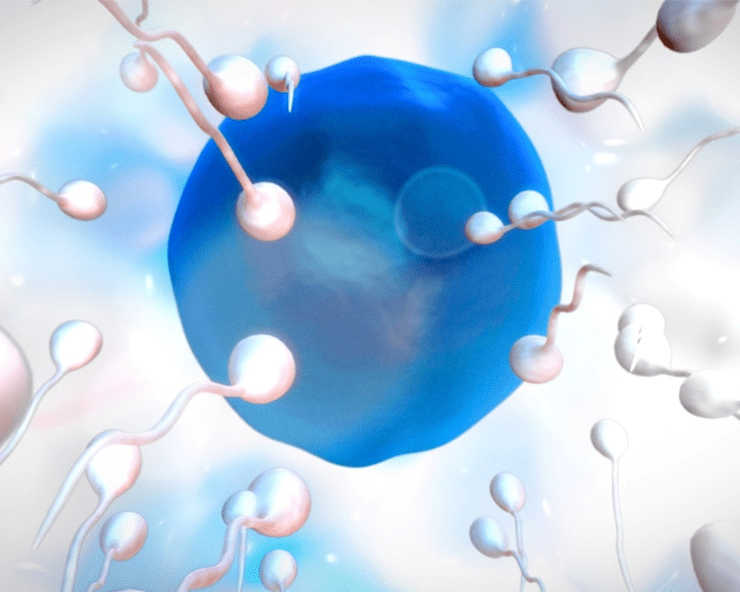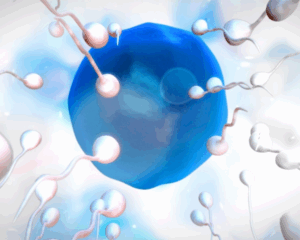
Prolistem for Non-Obstructive Azoospermia: A Comprehensive Guide
Prolistem for non obstructive azoospermia, Non-obstructive azoospermia (NOA)

Male infertility has long been a sensitive and challenging issue for millions of men globally. As fertility rates continue to decline due to lifestyle, environmental, and medical factors, the need for advanced treatments is more crucial than ever. The good news? The future of male infertility is promising. Researchers and medical experts are now exploring groundbreaking treatments that were once thought impossible. This blog explores the future solutions for male infertility, focusing on emerging technologies, cutting-edge research, and the hope they offer to couples worldwide.
Before diving into future solutions, it’s essential to understand what male infertility is and what causes it. Male infertility refers to a man’s inability to cause pregnancy in a fertile female partner. It’s often linked to:
Low sperm count
Poor sperm motility or morphology
Hormonal imbalances
Genetic conditions
Obstruction in sperm transport
Lifestyle and environmental factors
According to WHO, male infertility contributes to about 40–50% of all infertility cases. Hence, future solutions for male infertility must address various causes with a multidisciplinary approach.
Currently, available treatments include:
Hormonal therapies (e.g., gonadotropins)
Assisted reproductive techniques (ART) like IUI and IVF
Intracytoplasmic sperm injection (ICSI)
Surgical interventions for varicocele or blockages
Sperm donation
While these methods help many couples conceive, they often have limitations, such as:
High costs
Emotional toll
Low success rates in severe cases like azoospermia
Ethical and psychological concerns
That’s why exploring future solutions for male infertility is essential in improving success rates and offering hope to affected couples.
Let’s now explore the top advancements shaping the future of male infertility treatment.
One of the most exciting developments is stem cell therapy. Researchers are working on transforming stem cells into sperm cells. This could revolutionize treatment for men with non-obstructive azoospermia, where sperm production is absent.
Key advancements:
Studies show stem cells can be reprogrammed to develop into germ cells.
Successful experiments in mice have led to sperm regeneration and offspring.
Challenges:
Human trials are still ongoing.
Ethical and safety concerns must be addressed.
Stem cell-based therapies may soon become a mainstream option for those currently considered untreatable.
Genetic causes of infertility, such as Y chromosome microdeletions or Klinefelter syndrome, are tough to treat. With the rise of gene editing technologies like CRISPR-Cas9, scientists can now modify defective genes responsible for infertility.
Applications:
Repairing sperm DNA fragmentation.
Correcting mutations that lead to low sperm production.
Targeting epigenetic factors affecting fertility.
While clinical use is years away, gene editing has the potential to offer permanent solutions to genetically rooted infertility.
In-vitro spermatogenesis is a futuristic technique aiming to create sperm outside the human body using patient-derived cells.
How it works:
Testicular cells are cultured in lab environments.
These cells then differentiate into functional sperm.
Artificial sperm could be a game-changer for:
Cancer survivors who’ve lost fertility.
Men with complete spermatogenic failure.
Though still experimental, it’s among the most promising future solutions for male infertility.
Nanotechnology is another exciting frontier. It’s being used to:
Deliver fertility-enhancing drugs directly to testicular tissues.
Repair damaged DNA in sperm cells.
Enhance sperm motility through nano-engineered solutions.
This targeted approach increases efficacy and reduces side effects, making treatments more effective and safer.
3D printing has made headlines in the medical field, and now, it’s being tested for reproductive health.
Researchers are experimenting with bioprinting testicular tissue that can produce sperm. Though in the early stages, it offers future hope for:
Men with damaged or removed testicles
Testicular cancer survivors
If successful, this technique could bring about personalized fertility restoration.
Hormone imbalances are a common cause of infertility. Future treatments may involve more precise hormonal reprogramming using advanced endocrinology and biotechnology.
Examples include:
Long-acting GnRH analogs
Hormone-responsive gene therapy
Custom hormone modulation based on individual profiles
This customized approach ensures better outcomes with fewer side effects.
Artificial Intelligence is already transforming diagnostics in fertility clinics.
Benefits of AI in male infertility:
Identifying abnormal sperm through image analysis
Predicting treatment outcomes
Tailoring personalized fertility plans
Automating semen analysis with improved accuracy
AI will help clinicians make data-driven decisions, thereby improving success rates and patient satisfaction.
Future solutions for male infertility must also consider emotional well-being. Mental health plays a crucial role in treatment outcomes.
Expected developments include:
AI-based mental health support platforms
Virtual counseling and therapy
Partner and family-centered support modules
Combining medical and emotional care offers a more complete fertility journey.
Besides medical interventions, the future also emphasizes preventive measures and lifestyle innovations.
Devices can track scrotal temperature, hormone levels, and lifestyle habits in real-time, allowing early intervention.
Apps that identify environmental toxins (like BPA and phthalates) help users avoid fertility-damaging elements.
Future apps may offer sperm-friendly nutrition and fitness regimes based on your genetics, enhancing fertility naturally.
With great innovation comes great responsibility. Future treatments must consider:
Ethical Boundaries in Genetic Manipulation
Long-term safety of experimental procedures
Access to technology in developing countries
Cost implications for average families
Balancing innovation with ethics ensures that future solutions for male infertility are inclusive and responsible.
Experts predict that over the next 10 years:
Stem cell-based treatments may become FDA-approved.
Genetic testing will be part of standard infertility screening.
Custom therapies based on sperm DNA will become mainstream.
Artificial sperm may be used in assisted reproduction.
Dr. Mahmoud Abuelhija, Phd. states:
“We are on the verge of revolutionary breakthroughs that could eliminate some forms of male infertility.”
The journey of male infertility has been long and painful for many, but the horizon is filled with hope. The future solutions for male infertility are not just speculative — they are backed by real research, trials, and success stories in progress. As technology and medicine evolve hand in hand, men around the world can soon expect more accurate diagnoses, effective treatments, and a better chance at fatherhood.

Prolistem for non obstructive azoospermia, Non-obstructive azoospermia (NOA)

Introduction Male infertility, especially caused by azoospermia, affects

We are proud to have participated in the

Introduction: A New Hope in Male Infertility Treatment
PROLISTEM® is a Patented Formula
Copyright © 2025 Prolistem®